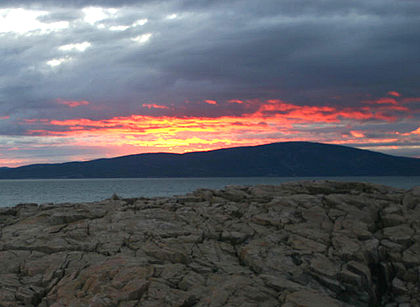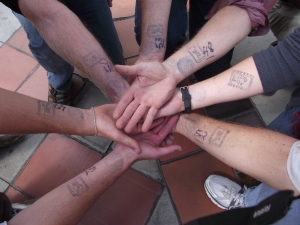 Late last month a group of 14 volunteers from Free Christian Church in Andover, MA ventured south to help with the work of Harvest Hands Ministries (www.harvesthandsministries.org). Our hosts were missionaries Terri and Gary Matthewson in New Mexico who are involved in many Christian efforts in the nearby Mexican state of Chihuahua. Over the last 13 years the Church has sent several such teams of volunteers.
Late last month a group of 14 volunteers from Free Christian Church in Andover, MA ventured south to help with the work of Harvest Hands Ministries (www.harvesthandsministries.org). Our hosts were missionaries Terri and Gary Matthewson in New Mexico who are involved in many Christian efforts in the nearby Mexican state of Chihuahua. Over the last 13 years the Church has sent several such teams of volunteers.
The FCC team brought money for supplies along with workers eager to help the desperately poor people that live in this hot, arid part of the world. We were one of several such Church groups which come each year to serve Christ through the work of this ministry. It made me proud to be an American and a Christian to see how many people are willing to take their time and money to help those in need!
The team loaded up supplies in El Paso, TX and then crossed the Rio Grande into Cuidad Juarez, its international sister city. In addition to contributions for building materials, food and supplies, we brought seven hundred pounds each of rice, flour and beans. The food was separated into smaller portions and offered to the poor residents of the area.
Harvest Hands founded and supports Resplandor de Vida Children’s home located on the outskirts of Juarez. Most of our time on this trip was spent supporting this home. Volunteers come for a week or so, put in as much labor as possible and then the facility waits for more money and workers to further the work. This is was my second trip to the mission. My wife Annie, son Ben and daughter Mikaila have all made previous trips.
Resplandor De Vida is in located inside of a walled fortress with high concrete block walls topped by razor wire and a padlocked gate. There is another such compound a short walk away, also was built by Harvest Hands, which is where the mission trip workers stay along with the property caretaker (Santos) and his family. The bible verse on the sign states in English: “My son, do not forget my teaching, but keep my commands in your heart…”
 There are intended to be two children’s dormitories, each housing 25 kids of each male and female. Currently there is one building finished housing 35, with the other still under construction. Completion will be as God provides workers and funds.
There are intended to be two children’s dormitories, each housing 25 kids of each male and female. Currently there is one building finished housing 35, with the other still under construction. Completion will be as God provides workers and funds.
Here the children’s basic needs are met as well as special needs on an individual basis (i.e.: psychological and educational). The children are also given spiritual guidance through daily devotions, Wednesday evening church services and daily attendance at a Christian school.
Since this is a children’s home and not an orphanage, the children go to their familial homes on the weekends, returning Sunday evening. During the time when we were not working and the kids were not away at school, there was plenty of time to share the joy of Christ or just joy! We built ramps, played games and bought them new bikes through the generosity of folks back home in Andover, MA.
The facility is run by Joaquin Estupiñan, chosen by Harvest Hands due to his commitment to help children and their families deal with severe poverty. He knows most of the families in the area and has a great reputation for caring and helping when asked. There are extreme cases of neglect, abuse, hunger, despair, and other forms of distress. As part of the community, Joaquin can help as soon as he is made aware of a need.
This people live in quiet desperation, in scorching heat, filth, and with an often corrupt government. Juarez is often listed as one of the most dangerous places in the world. Still, despite the horrible poverty and difficult circumstances, they do what they can to survive…note the sign above which states in English: “Food is sold for pig”.
In addition to regular financial support from Churches throughout the US as well as visiting mission teams, there are also opportunities to support individual children. For a nominal fee Harvest Hands will be able to support an additional child who might otherwise not get to go to school, learn of Christ’s love, or get adequate food and health care. I strongly urge you to either take part in a mission trip, or offer monthly support for a child. We grow stronger as a person each time we support someone in need.















 When my wife sees something new and innovative that she likes, she says: “that is the coolest thing I have ever seen!”. Well King Spa & Sauna in Chicago and Dallas may not be the coolest thing I have ever seen, but it is pretty cool.
When my wife sees something new and innovative that she likes, she says: “that is the coolest thing I have ever seen!”. Well King Spa & Sauna in Chicago and Dallas may not be the coolest thing I have ever seen, but it is pretty cool.






















